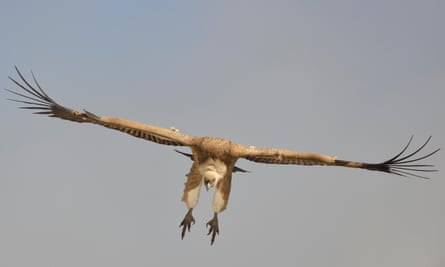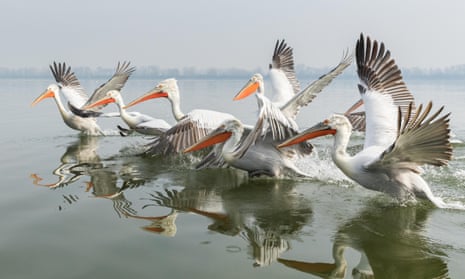Birds which have been given the highest level of protection by European rules are faring significantly better than other bird species, research has shown.
The study found birds protected as “annex 1” species under the EU’s birds directive, which requires governments to take action to conserve them, are more likely to have increasing populations than those that are not annex 1.
The protection was having a positive impact on threatened European bird populations even in the face of climate change, which is already affecting species, the study published in the journal Conservation Letters said.
But long-distance migrants did not see a significant benefit from the protection, suggesting efforts to conserve them in Europe were being outweighed by problems along their migration route or in their African wintering grounds.
The research, conducted by the RSPB, BirdLife International and Durham University, found the positive impact of the directive existed in both the short and long term, and threatened birds fared better in countries which had been EU members longer.
The study comes as the European commission conducts a review of the birds and habitats directives, a move which conservationists warn poses the biggest single threat to UK and EU wildlife in a generation.
They fear the commission’s review of the legislation, which in the case of the birds directive has been protecting wildlife since 1979, means the rules are at risk of being weakened by people who mistakenly regard them as a block on growth.
Threatened UK birds listed as annex 1 species such as avocets, white-tailed eagles, bitterns, red kites, cranes, corncrakes, ospreys and marsh harriers, have seen numbers increase significantly over the last 25 years, the RSPB said.

RSPB scientist Dr Fiona Sanderson, lead author of the paper, said: “We analysed information on all bird species breeding across the European Union.
“Our findings confirm that species with the highest level of protection under the birds directive, such as Dalmatian pelican, spoonbill, griffon vulture and greater flamingo, are more likely to have increasing populations, and that these results are most apparent in countries that have been members of the European Union for longer.”
RSPB conservation director Martin Harper said: “With such strong evidence of the effectiveness of Europe’s nature laws, coupled with record levels of public support across Europe, the European commission has a strong mandate to ensure these laws are maintained.
“These laws are delivering for Europe’s nature and its citizens, and now is not the time to jeopardise the effectiveness of these laws and the progress made.
“Instead we should realise the full power of the laws, and implement them to help more species.”
More than half a million people across Europe, including 100,000 from the UK, have backed calls by conservationists for the Commission not to amend the legislation.

Comments (…)
Sign in or create your Guardian account to join the discussion